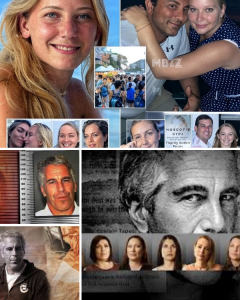A single, grainy video clip surfaced online, sparking a firestorm: was that really Jeffrey Epstein, years after his supposed death? The Mega Group, a secretive cabal of billionaires and global elites, stands at the heart of a conspiracy that refuses to fade, with leaked documents and whistleblower accounts fueling claims that Epstein’s fate is far from settled. Their chilling revelations—coded messages, hidden deals, and shadowy sightings—paint a world where power protects its own, no matter the cost. With every uncovered clue, the enigma deepens, gripping readers with questions that demand answers. Did Epstein truly die, or is he a phantom shielded by untouchable forces? As the Mega Group’s secrets unravel, the truth feels tantalizingly close yet dangerously out of reach.

It began, as so many modern scandals do, with a single piece of footage. A shaky, grainy video clip—thirty-one seconds long—uploaded anonymously in the dead of night. The figure was blurred, the timestamp missing, but the resemblance was unmistakable. Within hours, the internet was in chaos. Was that Jeffrey Epstein?
Years after his supposed death in a New York jail cell, the world’s most infamous financier—and convicted predator—has returned to haunt headlines. The clip’s authenticity remains unverified, but its impact has been seismic. For millions online, it reignited the question that never truly died: Did Epstein’s story end in that cell, or was it rewritten by forces powerful enough to erase the truth?
At the center of the storm lies the Mega Group, a name whispered for decades and now shouted across digital battlegrounds. This alleged cabal of billionaires, politicians, and global power brokers has been tied, in theory and in leaked correspondence, to an invisible architecture of influence. Some claim the group’s members didn’t merely know Epstein—they depended on him. He was, as one whistleblower put it, “the keeper of leverage—the man who held the keys to everyone’s secrets.”
The newly surfaced leaks and testimonies only deepen the mystery. Coded messages referencing “continuity operations,” offshore account movements, and unexplained private jet routes have emerged, all dated months after Epstein’s declared death. The documents suggest that his financial and information networks remained active—coordinated, silent, and lucrative. If true, it raises a chilling question: was Epstein’s empire dismantled, or simply absorbed by those who once orbited his power?
Whistleblowers describe a world where silence is bought in billions and truth is buried beneath layers of legal immunity. One anonymous insider claimed that “Epstein’s disappearance wasn’t the end—it was insurance. Someone wanted the name dead, not the network.” Whether that someone belongs to the Mega Group or another faction of global elites remains unclear.
Online investigators—digital detectives piecing together evidence from flight manifests, data leaks, and obscure video fragments—have found patterns too deliberate to ignore. The same companies once tied to Epstein’s foundations continue to move funds through hidden channels. The same people who denied knowing him now appear in records of private donations and encrypted correspondence. The picture that forms is neither conclusive nor comforting—it’s a mosaic of power, secrecy, and fear.
Still, even amid the hysteria, one truth stands firm: power protects its own. Every new leak triggers denials, every whistleblower faces silence or sudden disappearance. The official record remains a wall of ambiguity. But behind that wall, something moves.
Did Jeffrey Epstein truly die, or did his empire evolve without him—shielded by those too powerful to name? As the Mega Group’s secrets unravel piece by piece, the truth feels agonizingly close, glimmering just beyond reach.
And somewhere, perhaps in the dark corridors of power, a single question echoes like a warning:
If Epstein’s ghost still walks among the elite—what else have we been told to forget?
Leave a Reply